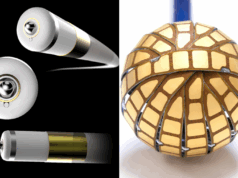
Stereotaxis and Erasmus Medical Center in Rotterdam, The Netherlands have announced the results of a seven-year clinical study, which provides significant findings in terms of the Stereotaxis remote magnetic navigation platform’s success in ventricular tachycardia ablations compared to both contact force sensing and other manual catheters.
“There is a persistent demand in the electrophysiology field for innovative technologies that reduce complications and improve success rates,” says Tamas Szili-Torok, Department of Clinical Electrophysiology at Erasmus Medical Center, Rotterdam, The Netherlands. “Our aim was to study the long-term efficacy of contact force sensing catheters compared to other manual catheters and Stereotaxis magnetic navigation in patients with ventricular tachycardia. On several clinical endpoints-acute success, major complications and recurrence rate using an intention-to-treat analysis-the use of Stereotaxis technology provided better results than both contact force and manual approaches.”
A total of 239 patients who underwent ventricular tachycardia ablation with control force catheters, other manual catheters or the Stereotaxis Niobe remote magnetic navigation system were included in this single-centre, cohort study from January 2007 until March 2014. The highest acute procedural success-86%-was achieved in the patient group using the Niobe system, compared to a success rate of 71% for the control force and manual groups. Major complications occurred in 1.2% of Niobe patients versus 10% of control force patients and 2.7% of manual patients. Moreover, the recurrence rate was lowest in the Niobe group, which had the most rigorous follow-up time of 29 months compared to 18 and 25 months for the control force and manual groups, respectively. Overall, 42% of Niobe patients had a recurrence during follow-up, versus 59% of control force patients and 57% of manual patients. Complete study results can be accessed online in the Journal of Cardiovascular Electrophysiology.
“Our findings support the benefits of the Niobe system’s maneuverability in difficult to reach anatomical areas and improved catheter stability to produce better long-term outcomes in complex ablation cases,” concludes Szili-Torok.









